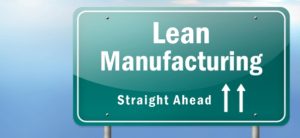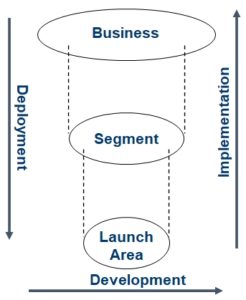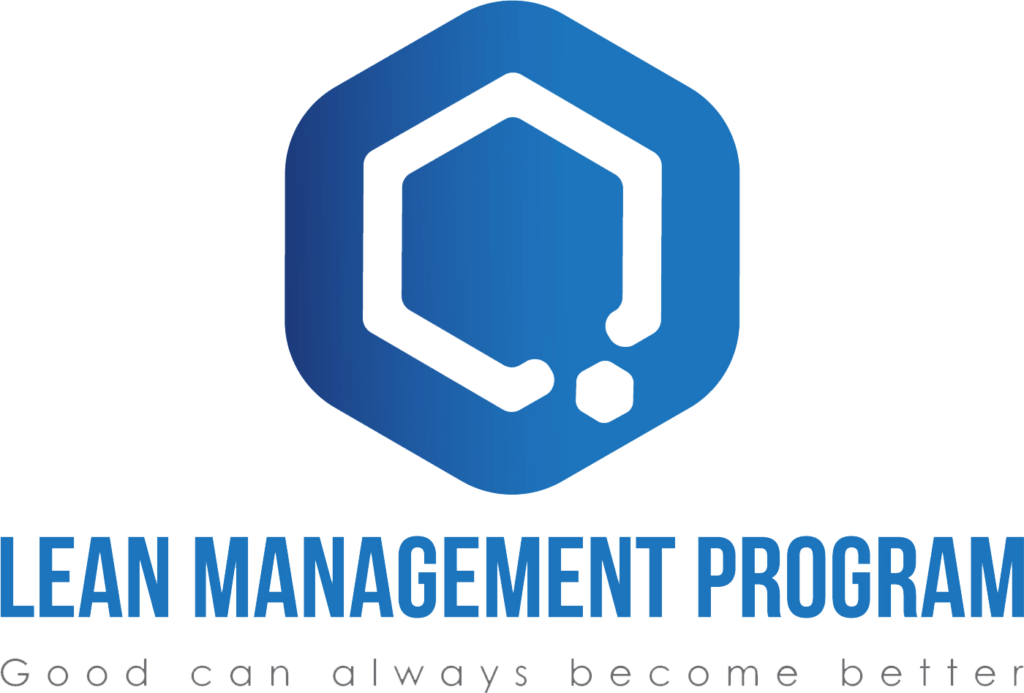Top-Down vs Bottum-Up
Top-down v.s. Bottum-up process optimization
Organisational changes are often difficult to get started. Where major improvement projects with sufficient focus still get off the ground, other less important improvements often remain unfinished due to lack of time and/or attention. This is a shame and can certainly be improved!
Continuous Improvement (CI)
With the new year approaching, efficiency is once again high on the agenda. The 6% target is pretty much the standard within the technology industry. This will have to be achieved with a few large projects and the new standard will once again be achieved. Nevertheless, numerous opportunities for improvement often remain. In particular, waste that occurs between 2 departments (sensitive!) is picked up less quickly or is not (or no longer) in the picture at all. A pity and certainly unnecessary. The call for Continuous Improvement is therefore increasing, but this needs to be organised!
Top-down
Of course, a company must be given top-down direction and kept on course. In addition to the Mission & Vision, we also use the Business plan and the Operations plan for this purpose. Together with the major improvement projects, these are further elaborated in the X-Chart or also called Priority Deployment (Hoshin Kanri). The aim of this is to check whether the plans are in line with each other and ultimately influence the desired KPIs. If desired, the X-Chart can also be used on a second level in order to carry out the same check in more detail. The KPI’s become more department specific, forming a clear structure or KPI tree. This gives employees insight so that they get more focus on what is really important for the company, steered on the basis of logically linked KPIs at each level.
Bottum-up
Eliminating much smaller waste has a major impact on the business. In addition to the waste itself, annoyances are removed and employee motivation increases. Many companies now use the so-called Tier system. Each Tier has its own target group and working area, which means that waste is identified locally and dealt with in a structural manner. If this is not done within the set period of time (often 1 to 3 days), the waste escalates to the next Tier. As a result of the escalation system, the heavier challenges often surface and it is necessary to keep them alongside the regular improvement projects (originating from the BP or VSM). If all goes well, these heavier bottom-up wastages must of course already be covered by the regular improvement projects. If not, it is time to review the existing projects and rank their priorities with the critical-to-matrix.
Standardize your Continuous Improvement (CI)
It may sound strange, but you also have to standardize CI. The Tier house helps to develop fixed patterns and tackle waste at every level with the right resources, appropriate to the severity of the challenge. In this way you involve the entire organisation step by step, with everyone at his or her level making an adequate contribution to the business objectives. The ultimate Lean feeling comes to life!
Want to know more about this subject and the approach?
Get to know the expertise of LMP. We provide training, coach Lean managers and carry out Lean improvement projects within numerous organisations. Get acquainted with our standard packages and take a look at LMP packages for our entire offer.

Top-down v.s. Bottum-up proces optimalisatie
Organisatie veranderingen komen vaak moeizaam op gang. Waar grote verbeter projecten met voldoende focus nog wel van de grond komen, blijven andere minder belangrijke verbeteringen vaak liggen wegens tijdgebrek en of aandacht. Dit is zonde en kan zeker beter!
Continuous Improvement (CI)
Met het nieuwe jaar op komst staat de efficiency weer hoog op de agenda. De 6% target is daarbij wel zo’n beetje de standaard binnen de technologische industrie. Met een paar grote projecten moet dit worden gerealiseerd waarbij de nieuwe norm weer wordt behaald. Toch blijven er tal van verbetermogelijkheden vaak liggen. Vooral verspillingen die optreden tussen 2 afdelingen (gevoelig!) worden minder snel opgepakt of zijn helemaal niet (meer) in beeld. Jammer en zeker overbodig. De roep om Continuous Improvement wordt daarom steeds groter, maar dat moet dan wel worden georganiseerd!
Top-down
Natuurlijk moet een bedrijf Top-down richting krijgen en op koers worden gehouden. Hiervoor gebruiken we naast de Missie & Visie ook het Business plan en het Operations plan. Samen met de grote verbeterprojecten worden deze verder uitgewerkt in de X-Chart of ook wel Priority Deployment (Hoshin Kanri) genaamd. Het doel daarvan is te controleren of de plannen op elkaar aansluiten en uiteindelijk de gewenste KPI’s gaan beïnvloeden. Desgewenst kan de X-chart ook op een tweede level worden ingezet om meer in detail eenzelfde check door te voeren. De KPI’s worden daarbij meer afdeling specifiek waarmee een duidelijke structuur ofwel KPI boom wordt gevormd. Dit geeft medewerkers inzicht waardoor die meer focus krijgen op wat werkelijk belangrijk is voor het bedrijf, gestuurd op basis van logische aan elkaar gekoppelde KPI’s op elk niveau!
Bottum-up
Heel veel kleinere verspillingen wegnemen hebben een grote impact op het bedrijf. Naast de verspilling zelf worden ergernissen weggenomen en neemt de motivatie van medewerkers dus toe. Inmiddels maken veel bedrijven gebruik van het zogenaamde Tier systeem. Elke Tier heeft zo’n eigen doelgroep en werkgebied waardoor lokaal verspillingen worden opgemerkt en op een structurele wijze worden aangepakt. Lukt dat niet binnen de gestelde termijn (vaak 1 à 3 dagen) dan escaleert de verspilling naar de volgende Tier. Door het escalatie systeem komen de zwaardere uitdagingen vaak bovendrijven waarbij het noodzakelijk is om die naast de reguliere verbeterprojecten (afkomstig uit het BP of VSM) te houden. Als het goed is moeten deze zwaardere bottum-up verspillingen natuurlijk reeds zijn afgedekt met de reguliere verbeter projecten. Zo niet, dan wordt het tijd om de bestaande projecten opnieuw te bekijken en hun prioriteiten te rangschikken met de critical-to-matrix.
Standaardiseer je Continuous Improvement (CI)
Het klinkt wellicht vreemd maar ook CI moet je standaardiseren. Het Tier huis helpt daarbij om vaste patronen te ontwikkelen en verspillingen op elk niveau met de juiste middelen, passend voor de zwaarte van de uitdaging, aan te pakken. Hiermee betrek je stap voor stap de gehele organisatie waarbij iedereen op zijn of haar niveau een adequate bijdrage gaat leveren aan de bedrijfsdoelstellingen. Het ultieme Lean gevoel komt tot leven!
Meer weten over dit onderwerp en de aanpak?
Maak kennis met de expertise van LMP. Wij verzorgen trainingen, coachen Lean managers en voeren Lean verbeter projecten uit binnen tal van organisaties. Maak kennis met onze standaard pakketten en kijk voor ons gehele aanbod op LMP pakketten

Nieuws & Blogs
- Een dagstart alleen is niet voldoende 26 mei 2023
- Ook LMP groeit door! 3 mei 2023
- Checklist voor ondernemers 19 juli 2021
- Top-Down vs Bottum-Up 22 december 2020
- Top-Down vs Bottum-Up 22 december 2020
News & Blogs
- Een dagstart alleen is niet voldoende 26 mei 2023
- Ook LMP groeit door! 3 mei 2023
- Checklist voor ondernemers 19 juli 2021
- Top-Down vs Bottum-Up 22 december 2020
- Top-Down vs Bottum-Up 22 december 2020
